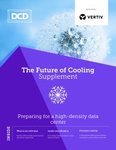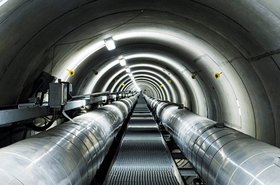In the current landscape dominated by AI-driven applications and dense chip architectures, liquid cooling has emerged as a pivotal technology.
As per Douglas Insights, the liquid cooling market is set to grow at an annual rate of 20 percent until 2028. This surge is largely fueled by the need to manage the substantial heat output of high TDP chips like Nvidia's H200 chipsets, which can reach up to 700W.
This growth is not just numbers on a chart; it mirrors the burgeoning demands of our AI-driven world, where research shows AI’s computational power is doubling every 6-10 months.
Traditional cooling methods are no longer sufficient, shifting liquid cooling deployments from a nice-to-have to integral to maintaining efficiency, preventing overheating, and extending the lifespan of computing systems while saving operational and capital cost spending.
The shift to specialized infrastructure in data centers
As we navigate this new era of accelerated computing and generative AI, as highlighted by Jensen Huang, we're witnessing a shift from general-purpose computing to a more specialized, purpose-built infrastructure.
This shift is driving the need for advanced cooling solutions, particularly in high-density deployments like GPU clusters, pods, and modular data centers.
These systems, crucial for efficiently managing the substantial heat produced by densely packed CPUs and GPUs, are now a fundamental part of modern data center design. Liquid cooling technology emerges as a key player.
By implementing liquid cooling, ODM and OEM manufacturers can create more compact, high-density servers, offering space and power-efficient solutions for various customers. This alignment of liquid cooling capabilities with the demands of AI infrastructure is reshaping data center design and operations toward modular and scalable approaches.
New H1 standards from ASHRAE
The new H1 standards set by the American Society of Heating, Refrigerating and Air Conditioning Engineers (ASHRAE), advocating for a temperature range of 64.4°F to 71.6°F (18°C to 22°C) for cooling high-intensity IT servers, are influencing a shift in data center cooling practices.
Achieving these standards in traditional air-cooled facilities presents challenges. Options such as lowering air cooling set points to meet the H1 range can lead to increased energy and water usage, thereby raising operational costs.
These approaches might not be cost-effective or practical for every facility. In this context, alternatives like direct-to-chip (D2C) liquid cooling systems are gaining attention. These systems, particularly those using liquid-assisted air-cooling with microjet impingement, offer targeted cooling for high-density areas, potentially avoiding the need for major facility overhauls.
D2C liquid cooling solutions are also recognized for their energy efficiency, contributing to a reduced environmental impact and lower operational costs. Their scalability and ease of deployment make them a consideration for data centers exploring liquid cooling for server technology.
Addressing power constraints in EMEA and Globally
Globally, the rise in liquid cooling deployments is largely attributed to increasing power constraints, a challenge that is particularly pronounced in regions like EMEA (Europe, Middle East, and Africa).
In these areas, the data center industry's largest customers are securing power capacity at such an increasing volume that it's outpacing completed development.
Because of this, the energy-saving attributes of liquid cooling systems are highly desirable. Liquid cooling technologies significantly reduce the power required for cooling, enabling data centers in power-constrained markets to optimize their operations.
This trend is not limited to EMEA; worldwide, data centers are grappling with similar issues. As the demand for data processing and storage skyrockets, the energy required for traditional cooling methods becomes unsustainable, both environmentally and economically. Liquid cooling offers a solution by efficiently managing the heat output of high-density servers while consuming less power.
This shift towards liquid cooling is essential for data centers aiming to expand their capabilities sustainably in the face of global power limitations. Particularly within EMEA, the Nordic regions are becoming hotspots for liquid cooling in AI data centers.
Their cooler climate and plentiful green energy resources greatly improve cooling efficiency and cut down operational costs. Moreover, these regions provide geopolitical stability, economic benefits, and state-of-the-art technological infrastructure. This combination positions the Nordics as the go-to hub for developing sustainable and high-performing AI data centers that utilize advanced liquid cooling approaches.
Liquid cooling: Paving the way for a sustainable and efficient future
As the liquid cooling phenomenon continues to reshape the data center landscape, its significance becomes ever more evident.
The Nordic regions within EMEA exemplify the ideal confluence of cooler climates, renewable energy resources, and technological advancements, making them ideal for sustainable and high-performance data center operations using liquid cooling.
As data centers worldwide continue to grapple with the demands of advanced computing and environmental sustainability, liquid cooling stands out as a pivotal solution, paving the way for a future where data processing is both powerful and sustainable.







